|
"The images and sounds of Wynne's Anspayaxw hang in the border zones between anthropology and art, drawing attention to the subjective nature of language documentation and photography, and the multiple layers of translation that are central to the documentation and interpretation process. It is Wynne's navigation of this border space between disciplinary practices that is most unsettling about the work. The sounds and images, the products of ethnographic and linguistic research, are edited and remixed to resist easy interpretation. Reality, Wynne suggests, is never symmetrical. This is a quality that the doubled images are intended to reflect. The imperfect reflections counter the viewer's desire for symmetry; they disrupt the sense that what is seen and heard can be simply understood. Relations of power are rarely symmetrical either, but there are spaces of negotiation in between."
Kate Hennessy (excerpt from 'Asymmetrical Translations: John Wynne’s Anspayaxw')
|
|
 |
|
Anspayaxw (Kispiox) is a small reserve in northern British Columbia where I worked with linguist Tyler Peterson and visual artist Denise Hawrysio to record and photograph members of the Gitxsan community. Their native language, Gitxsanimaax, is one of many seriously endangered languages on the west coast of Canada, an area of remarkable but dwindling linguistic diversity. There are roughly 400 ‘competent’ speakers of Gitxsanimaax, but most of these are middle-aged or older and their average age is rising.
Language is a primary repository of culture and history, and once a language is no longer spoken, the rich knowledge it carries is gone forever. The linguistic diversity of the world is under threat: there are currently about 6,000 languages spoken now but it is variously estimated that between 50 and 90% of these will be gone by the end of this century.
The word Anspayaxw ends with a ‘voiceless fricative’, a breathy sound characteristic of the language which influenced the way I have worked with the environmental sounds. All the sounds in the piece are derived from the participants’ voices and recordings I made in and around Kispiox. Sometimes, these sounds are filtered, stretched and resonated, but no other sounds have been added.
|
|
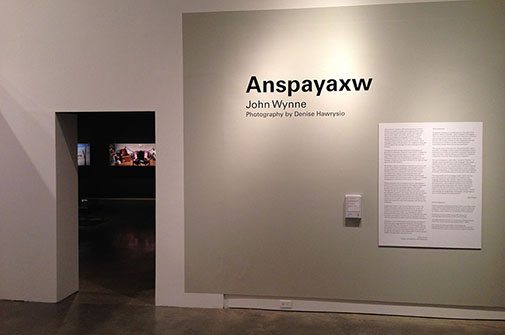 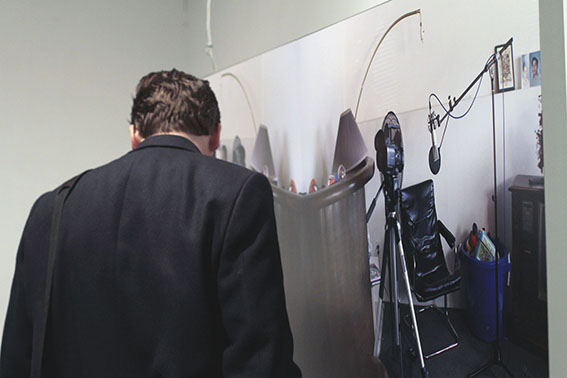
|
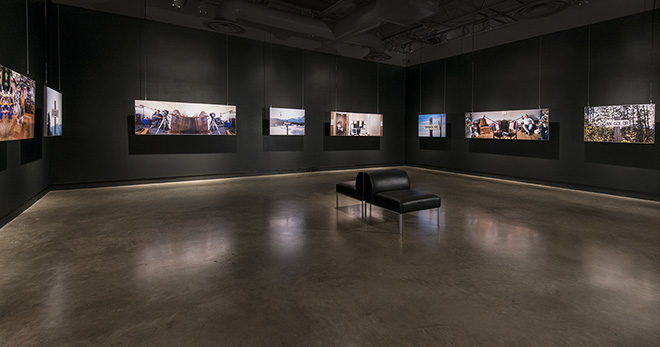
The panels you see hanging in the Surrey Art Gallery, above, are both photographs and speakers.
The larger ones are 2 metres wide, and each panel plays an independent channel of sound.
Photo: Scott Massey
|

Panoramic view of the installation at the Museum of Anthropology in Vancouver
|
 ...... ......
Click above for two audio excerpts mixed down to stereo from the original 12-channel piece
|

Click above to read the article by Jen Van Evra
|

Interview with Stephen Quinn on CBC Radio's On the Coast

Interview with Paolo Pietropaolo on CBC Radio's North by Northwest

Interview with curator Karen Duffek
|
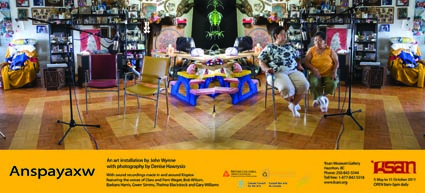
Poster for the exhibition of Anspayaxw at the 'Ksan Museum gallery
in Gitxsan territory in Hazelton, British Columbia, close to the Kispiox reserve
where the recordings were made and the photographs taken.
|
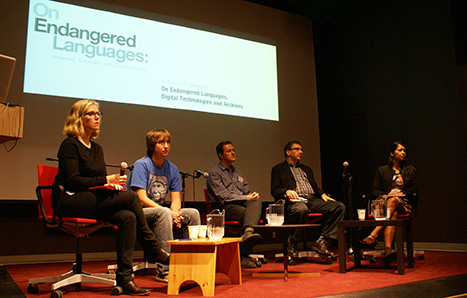
The symposium On Endangered Languages: On Endangered Languages: Indigeneity, Community and Creative Practice
took place at the Museum of Anthropology in Vancouver. It included the performance "Hello Darlin'"
by Tahltan artist Peter Morin (see below).
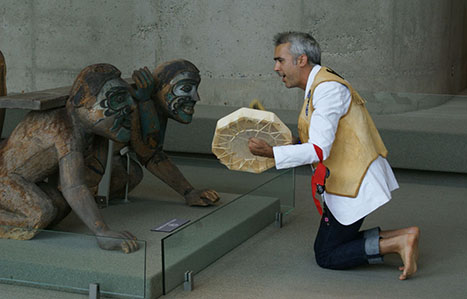
|
|
This project is dedicated to the memory of Doreen Jensen (Ha'hl Yee), artist and project participant (1933-2009).
Special thanks to
Barbara Harris for introducing me to her language, to her community and to my collaborator, linguist Tyler Peterson.
Thanks also to Karen Duffek,
Denise Hawrysio, Tyler Peterson, Chris Rolfe, The Weget family, Louise Wilson, John and Helen Heit and the community of Kispiox,
in particular those with whom we worked, but also to everyone in Kispiox for welcoming us to their community.
The project was funded by an ELDP Fieldtrip grant from the Hans Rausing Endangered Languages Project at SOAS and a production grant from the Canada Council for the Arts,
with additional in-kind support from Amina Technologies, University of the Arts London and the UBC Museum of Anthropology.
|









